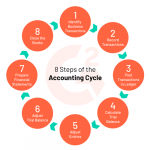They record the depreciation expense in order to account for the fact that the assets are gradually becoming worth less and less. This depreciation expense is treated as a cost of doing business and is deducted from revenue in order to arrive at net income. Likewise, the company needs to make the journal entry for gain or loss on the sale of stock investment in the income statement together with the removal of the sold stock investment from the balance sheet. We have more how-to’s when it comes to booking journal entries, which can be found right here.

The journal entry is debiting cash received, accumulated depreciation and credit cost, gain on sale of fixed assets. When you took section 179 accelerated depreciation you should have entered it on the books. Journal entry, debit depreciation expense, credit accumulated depreciation.Your question about selling a section 179 vehicle is much more complicated. Section 179 depreciation assumes a certain period for that type of fixed asset. If you sell the asset before the end of that period then on the income tax form you have to re-capture the depreciation amount applicable to the time period you no longer have the asset – re-captured income is the result.
Example 2: Sale of fixed assets journal entry
Buildings and any improvements to the inside or outside are also fixed assets. For example, a tenant may need to remodel the interior and pave the parking lot of a leased building. Also, if a company disposes retained earnings equation of assets by selling with gain or loss, the gain and loss should be reported on the income statement. The net proceeds from the sale of an asset are recorded in an individual or corporate account.
On the other hand, when the company incurs a loss by selling the assets, a ‘loss on sale of asset’ journal entry is to be booked. In accounting, whether it was a loss or gain on the sale of fixed assets, it must be shown on the company’s income statement. In the same journal entry, the company will debit the accumulated depreciation account by the amount of the asset’s accumulated depreciation. The accumulated depreciation on the balance sheet is the total depreciation expense that the business recorded while it owned the asset. As a contra-asset account, accumulated depreciation would increase by a credit entry and decrease by a debit entry. If for instance, Onyx Group of companies recorded $15,000 in depreciation on the machinery while it owned it, on the sale of the machinery, the accumulated depreciation account will be debited by $15,000.
Sale and leaseback transactions have long been popular because they present benefits to both seller-lessees and buyer-lessors. The accounting for such transactions has changed significantly, though, with FASB’s issuance of new standards for revenue recognition and lease accounting in recent years. On January 31, the date the machine is sold, the company must record January’s depreciation. This entry debits $400 to Depreciation Expense and credits $400 to Accumulated Depreciation. As CEO and Co-Founder, Mike leads FloQast’s corporate vision, strategy and execution.
How to Categorize Supporting Costs: Capitalized or Expensed?
When the amount in the accumulated depreciation account reaches $3,780, the full value of our table has been recognized as depreciation expense on the income statement. Next, the accountant should debit the company’s cash journal entry for the full amount of cash received from the sale of the asset. Recording the closing entries The accountant first must update the depreciation account for the asset to make it current to the date of sale.
The fixed asset sale is one form of disposal that the company usually seek to use if possible. In this case, the journal entry of fixed asset sale may result with debit or credit in the income statement depending on how much the company sell the asset comparing to its net book value. When an asset is sold or scrapped, a journal entry is made to remove the asset and its related accumulated depreciation from the book. The asset is credited, accumulated depreciation is debited, cash in debited, and the gain or loss is recorded as either revenue (gain) or expense (loss) using an account called Gain or Loss on Sale of an Asset. Accounting for fixed assets can be a bit complicated and there are a number of other fixed asset transactions that may call for journal entries.
Example of Asset Disposal
Proceeds refers to the cash received from the sale of goods or assets during a particular period. The total is obtained by multiplying the quantities sold by the selling price per unit. The proceeds received before any deductions are made are known as gross proceeds, and they comprise all the expenses incurred in the transaction such as legal fees, shipping costs, and broker commissions. When taking into account the sale of a fixed asset or plant asset, there are several things that must be taken into consideration. The depreciation expense of the fixed asset must be recorded up to the date of the sale and the fixed asset’s cost as well as the updated accumulated depreciation must be removed from the books. If there is a difference between the sales price and the price paid for the asset, then the company must also recognize that difference on the income statement.
- In order to calculate the gain or loss on the sale of assets, we, first of all, subtract the asset’s accumulated depreciation from its original cost and then subtract the resulting amount from the asset’s sale price.
- A fixed asset is something that will be used in the business and that has a useful life of more than a year.
- If the sales price is less than the asset’s book value, the company shows a loss.
- Upgrading to a paid membership gives you access to our extensive collection of plug-and-play Templates designed to power your performance—as well as CFI’s full course catalog and accredited Certification Programs.
- Liquidity refers to the degree of how easily and quickly an asset or investment can be converted into cash without significantly impacting its market value.
Net proceeds are the final consideration that the asset owner/seller receives after deducting all costs and expenses incurred in the transaction. When disposing of a house, the first cost that is deducted from the cash received is the success fee. That fee is paid to the real estate agent for the successful sale of the house to another party. Asset disposal may require the recording of a gain or loss on the transaction in the reporting period when the disposal occurs. If the sales price of the asset is greater than the asset’s book value, the company records a gain but if the sales price of the asset is less than the asset’s book value, the company records a loss. Moreso, if the sales price of the asset equals the asset’s book value, then no gain or loss is recorded.
THE NATURE OF LEASEBACKS
In each case the fixed assets journal entries show the debit and credit account together with a brief narrative. For a fuller explanation of journal entries, view our examples section. When we sell the table, we write off the remaining balances in both Fixed Assets and Accumulated Depreciation in the general ledger. The difference between the book value of the asset and our sales proceeds is recognized as a gain.
Description of depreciation – Carwash Online
Description of depreciation.
Posted: Thu, 29 Sep 2022 07:00:00 GMT [source]
Add up all the debits to determine the total debts and deduct the total from the credits to get the seller’s net proceeds. Usually, the assets may be sold in current value, or more/less than at a current value. When the assets are sold for then its written down value, the profits arising from it will be treated as profits for the company. These profits can be allocated as Revenue Profit and Capital profits for tax purposes. When the assets are sold less than their written down value, it will incur the loss of the company. However, if the cash that Onyx Group of companies received was greater than the equipment’s book value, then the company would have recorded the difference as a credit to ‘Gain on Sale of Fixed Assets’.
Taxpayers are required to pay taxes to the federal government on the capital gains realized from assets. In order to obtain the capital gains or losses on assets, you must have the basis amount, which is the amount paid to acquire the asset. When a business sells an asset, whether tangible or intangible, it receives a payment, which is the gross proceeds. The amount includes the costs of production and other costs and expenses related to the transaction.
Sometimes, the company may need to sell the stock investment back when it needs cash for the business operation or for any other reasons. In this case, the company usually makes a gain or loss as a result of the sale. As a result of the coronavirus pandemic, FASB has voted to delay by one year the effective dates of its lease accounting standard for certain entities. The delay makes FASB ASC Topic 842, Leases, effective for private companies and private not-for-profits for fiscal years starting after Dec. 15, 2021.
FedNat Holding Company: NOTICE OF SALE OF CERTAIN ASSETS … – Insurance Journal
FedNat Holding Company: NOTICE OF SALE OF CERTAIN ASSETS ….
Posted: Tue, 14 Mar 2023 07:00:00 GMT [source]
If ABC Ltd. sells the equipment for $7,000, it will make a profit of $625 (7,000 – 6,375). As an example, let’s say our example asset is sold at the end of Year 3 and that we used Straight Line depreciation for this asset. This new ledger would be used in place of the 4200 ledger detailed in the Record the Sale of the Asset step above. Upon recording your Other Receipt, you will now have the option to tick the Outside of Flat Rate option. This would only be applicable when the initial VAT at time of Purchase of your Asset was also processed as being Outside of Flat Rate (Value of purchase exceeding £2000). In our example, the Sale of Assets ledger account now as a balance of £-2,000.
Transfer the original purchase price
This final step removes the account from the books entirely, balancing the books, and fully accounting for the asset sale. The difference between the current book value of the asset and the proceeds received from the sale of the asset determines if the business made a gain or a loss. If the proceeds exceed the current book value of the asset, then the business is deemed to have made a gain. Some of the costs that may be recorded on the debit side include escrow handling fees, transfer fees, outstanding mortgage, excise tax, pest inspection costs, home warranty, roof inspection, repairs, homeowner association fees, etc.

Fixed assets are long-term physical assets that a company uses in the course of its operations. The purpose of fixed assets is to provide a stable foundation for a company’s ongoing business activities. Examples of fixed assets include factory equipment, machinery, computers, vehicles, and office furniture.